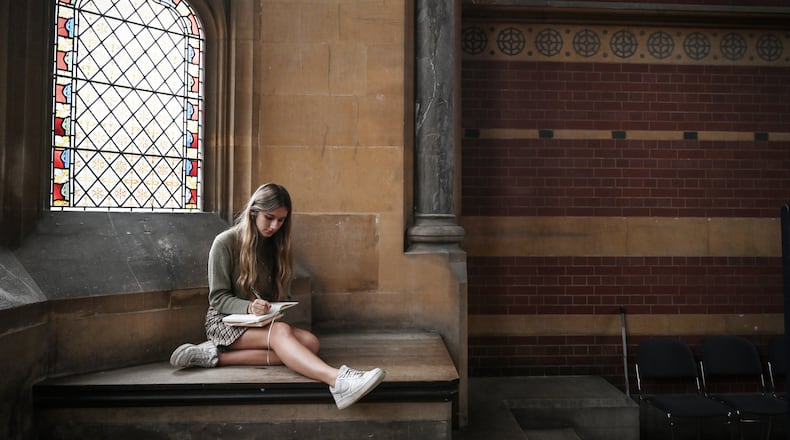Students often lament they spend hours studying but still flub their tests. Social psychologist Regan A. R. Gurung believes many of these struggling students did indeed study. An expert on teaching and learning, Gurung says his research and experience as a college professor convinced him many students just don’t know how to do it right.
Gurung directs Oregon State University’s Center for Teaching and Learning. He and cognitive psychologist John Dunlosky, director of Kent State University’s Science of Learning and Education Center, are national experts on effective studying and have co-authored a new book that outlines the best strategies.
The strategies go beyond the usual approach by students: get the book, read it, maybe reread it and then, a day or two before the exam, review your notes and perhaps make flashcards.
In an interview on “Study Like a Champ: The Psychology-Based Guide to ‘Grade A’ Study Habits,” Gurung said, “The goal isn’t to study longer, but study smarter. If students are studying, they need to take another step to understand how they are studying.”
Students typically believe rereading material will help them. What they should be doing instead is testing themselves on how well they can call up the information they learned, using a technique called retrieval practice. “Because if you can retrieve content from memory, it turns out that you get a boost in long-term retention,” said Gurung.
When students test themselves with flashcards or practice questions and struggle to produce the answer, they know precisely what they didn’t get and need to revisit, he said. Gurung understands retrieval practice may prove more frustrating than merely rereading the book, but says it is a far better study strategy and use of a student’s time.
A second key to mastering content is what Gurung describes as spacing, which means to study the same material in one or more sessions. Rather than review Chapter 1 in a biology course on one night and then move to Chapter 2 in your next study session, go back and restudy the earlier content, he said. The spacing effect is one best documented practices in learning and memory research with repeated confirmation that studying information on multiple occasions creates enduring learning.
Gurung concedes that waiting to the end of a course and pulling all-night cram sessions might enable students to pass a final exam. “But if students need that content for subsequent classes in their major, it won’t be there. I tell my students that if they want to know how well they learned the material from cramming, wait even two weeks to see how much they remember.”
Gurung also advises students, including his own two teens, to reject the myth they can multitask while studying. “When I see my 16-year-old studying on his computer, with his phone next to him and music on, I tell him that is not studying.”
Students often insist they can glance at text messages or pause to watch a TikTok video during a study session with no repercussions. Gurung said the research shows divided attention diminishes learning.
At Oregon State, he opens his classes by sharing the research on the impact of multitasking. He doesn’t ban phones and even uses them to toss out questions that students answer in chat. In an auditorium of 400 students, there are people more comfortable with responding via chat than raising their hand, he said.
After the first exam, Gurung shares data with his class and discusses the negative correlation between test performance and attentiveness. He then asks students four questions that often lead them to concede the dangers of distractions: What did you do that helped you learn? What will you do differently from here on out? What did I do to help you learn and what can I do to help you do better?
Many of his students respond they’ll turn off their phones and develop stronger studying practices.
One of those practices is taking notes. “Students aren’t taking notes as much,” said Gurung. “Whether listening to a master class on cooking or an online class, note taking is a strategy in itself. We have to realize the process of taking notes helps us organize the material and is a tool that is vastly underutilized.”
It makes no difference how students take those notes, longhand or on a computer. “Neither is better. The magic happens after you get good notes down,” he said. (Gurung points to a study that shows students using laptops spent only 37% of the time on class-related work, so he advises students consider whether they can resist temptation with an open screen in front of them.)
Gurung urges students to look at their notes and revise them if they missed key points, perhaps comparing their notes to those of a classmate.
While college orientation programs often promote study habits, Gurung said first-year students aren’t focused on academics yet in those early days. “Study skills sessions are often held the day after students move in and they haven’t even unpacked,” he said.
Gurung advises educators to integrate study skills into class and employ the strategies themselves with their students. He introduces his students to the concepts of retrieval practice on the first day of class. “By week three,” he said, “they are saying let’s do more retrieval practice.”
About the Author
The Latest
Featured



